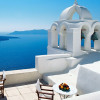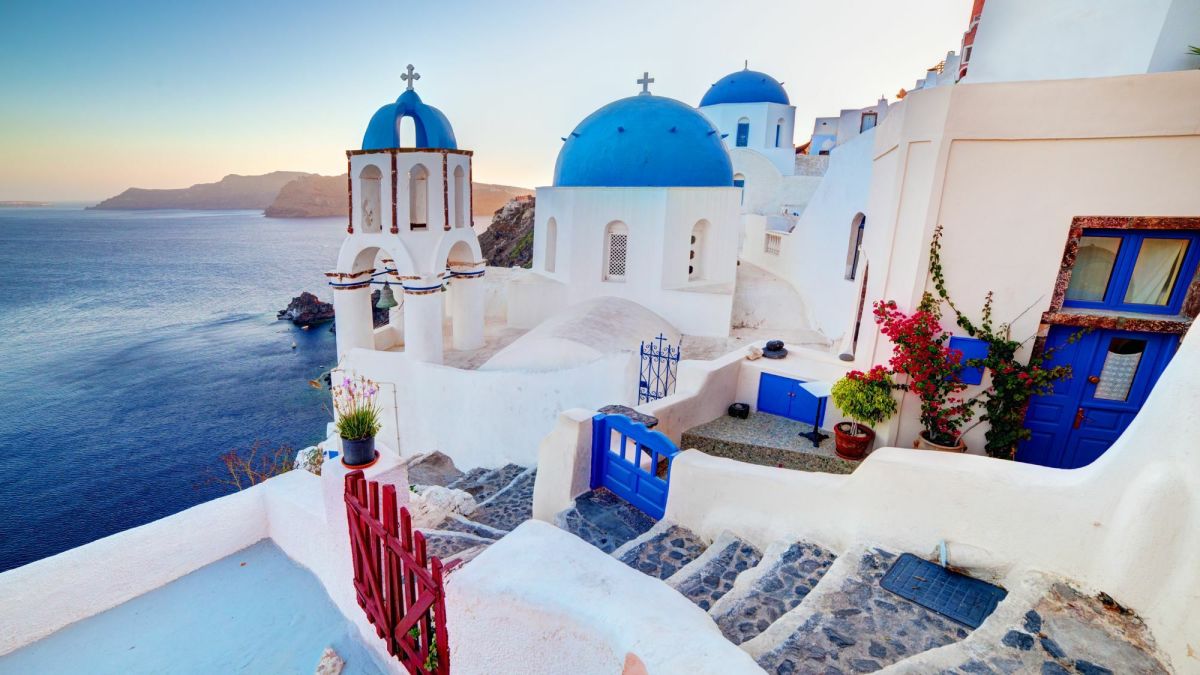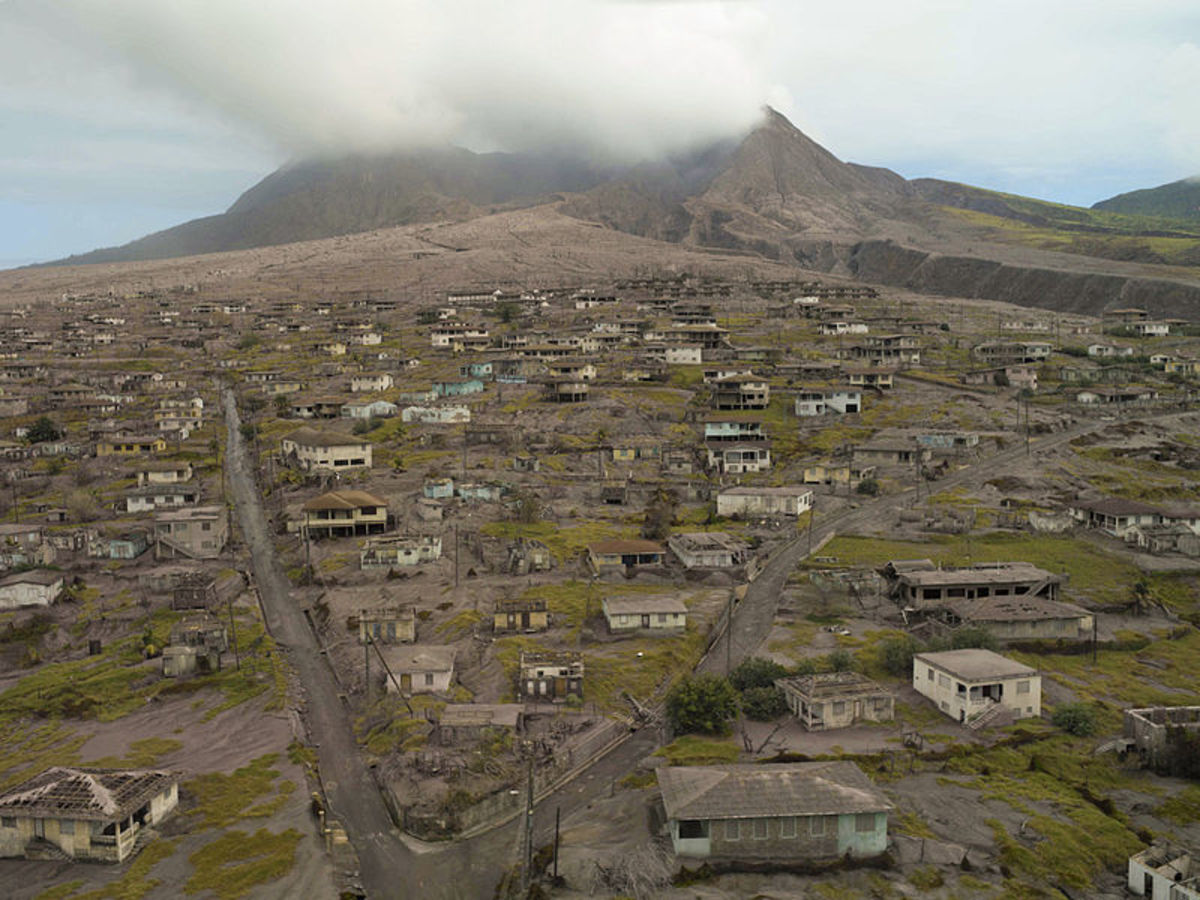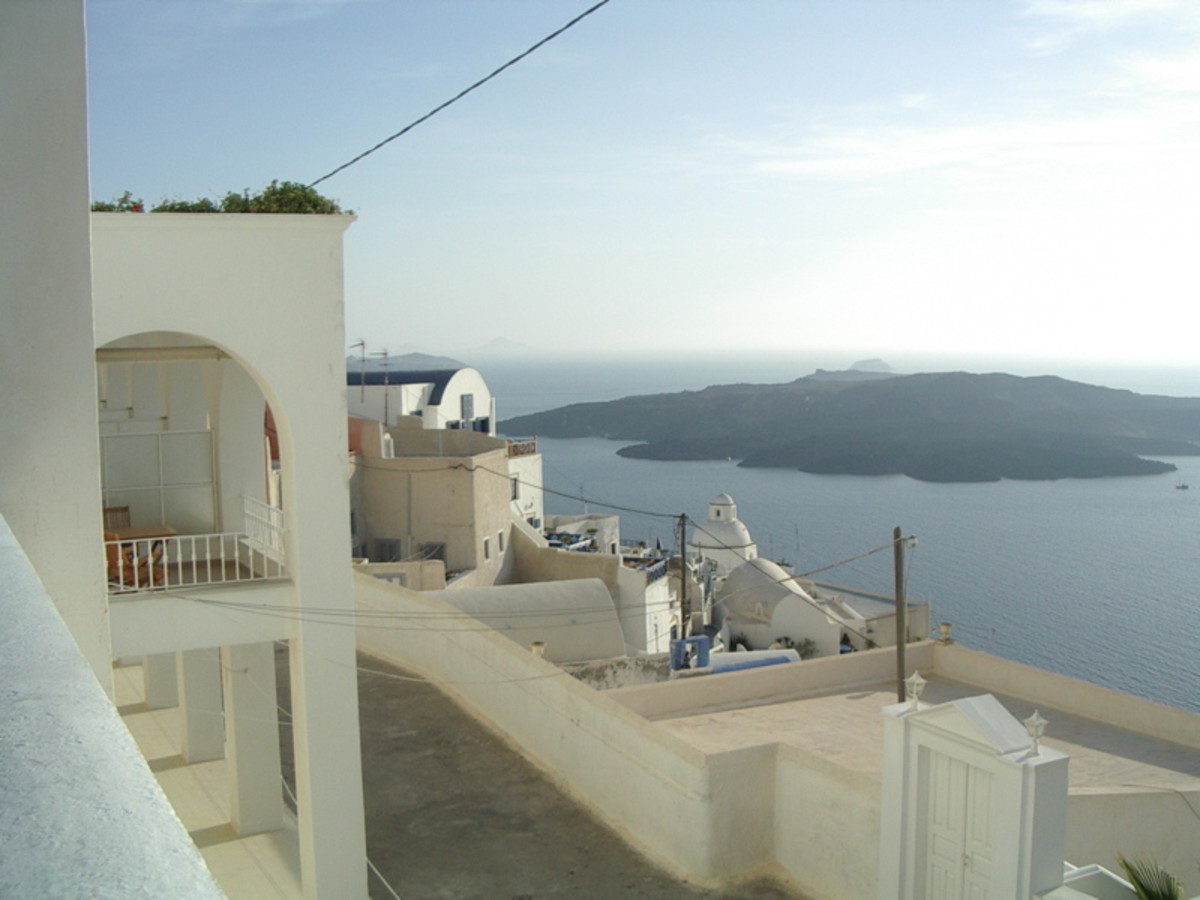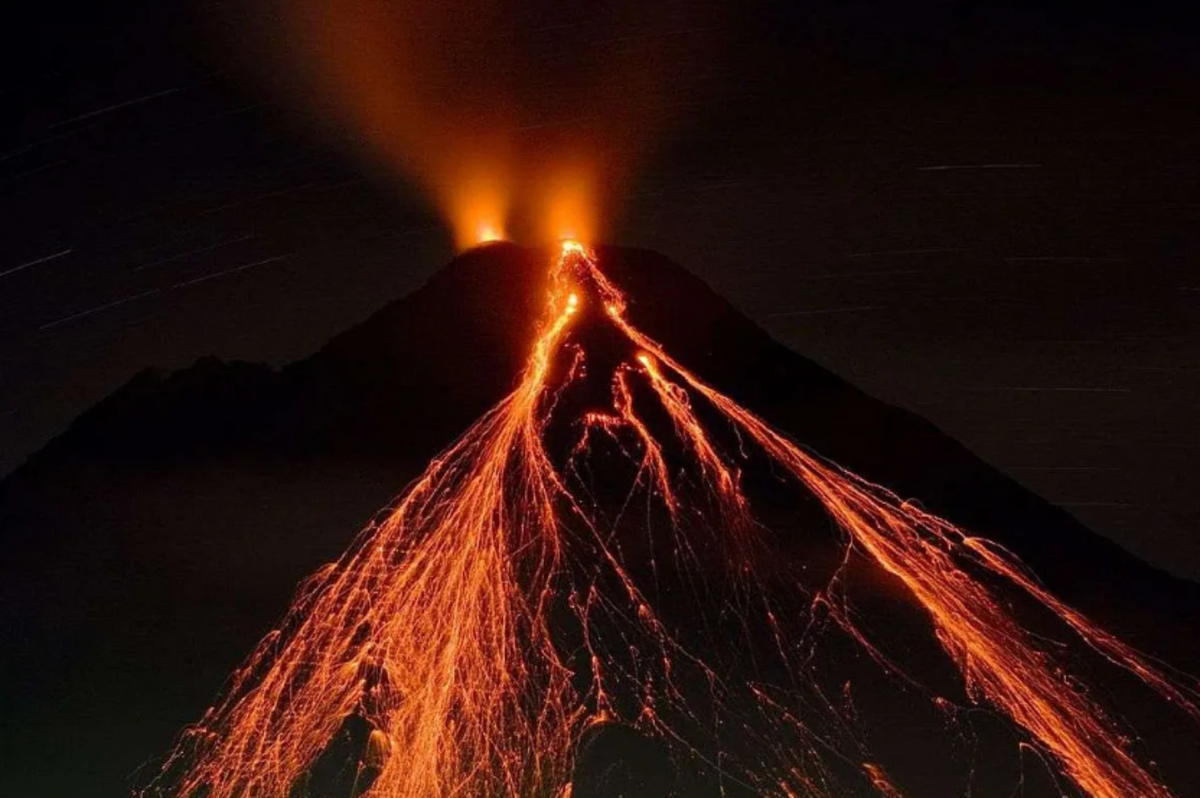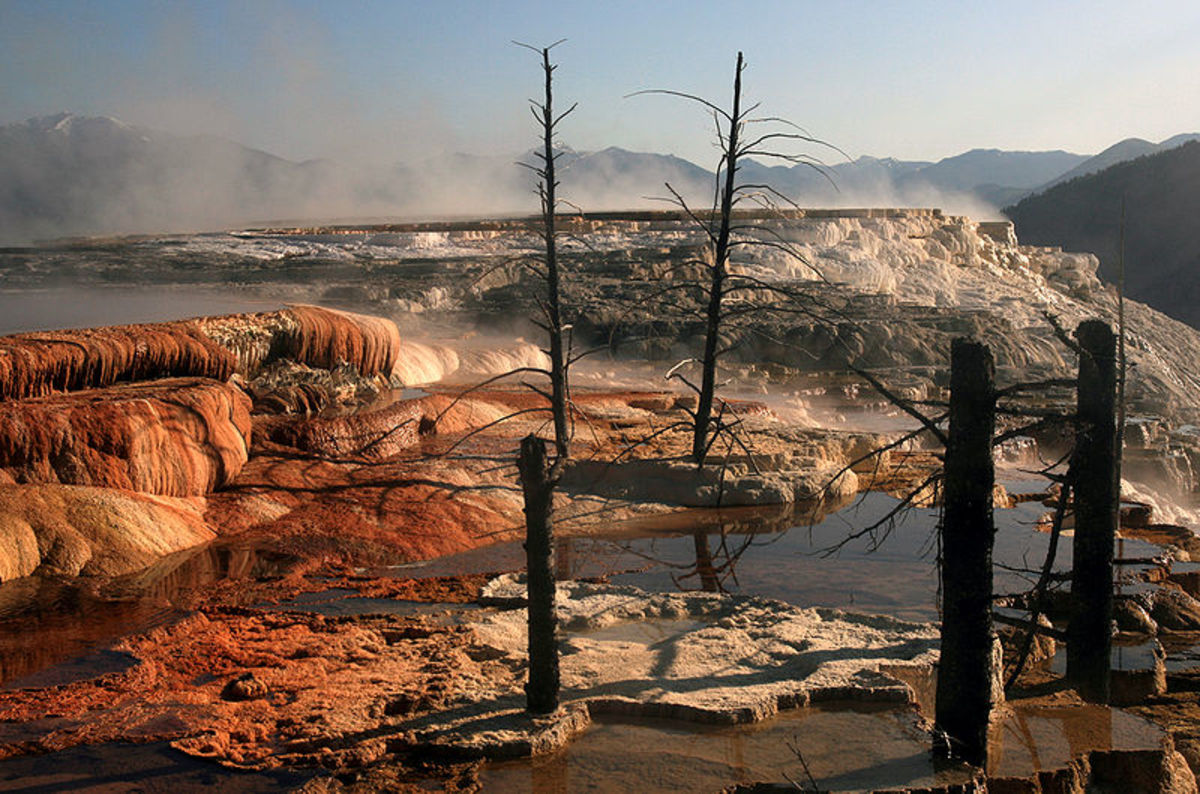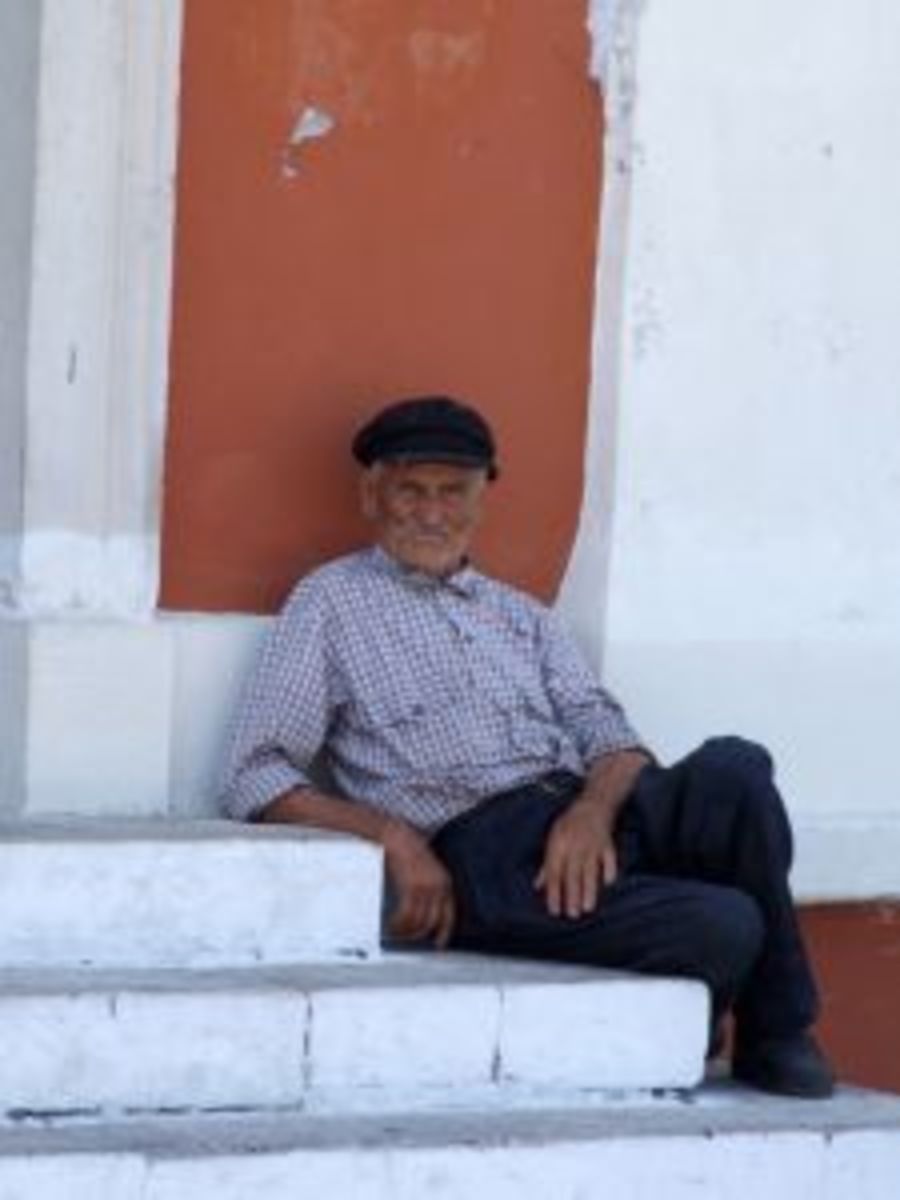Santorini Greece
Santorini Island Greece
It is one of the top ten tourist destinations worldwide. Even the most demanding tourists remain open-mouthed in front of overwhelming, surreal landscapes, the result of the most violent volcanic eruptions in history.After some speculation, an eruption, 3,600 years ago would have led to the disappearance of Atlantis. True or not, the caldera which is lagging behind its vast curtain of cliffs is an impressive place, especially when you see it coming on sea, on a boat or a ferry.
Greek island of Santorini is famous for fantastic sunsets, that are best seen especially from Oia village, its most northerly and most famous village, incredibly quiet during the day and very alive at night, when tourists take it by storm.
The image of white houses hanging on the top of the cliffs seems unreal, the blue roofs gleam over the sea or the swimming pool with rounded shapes, that are the island’s trademark. From the southernmost edge of the caldera, which Santorini is known around the world for, the last gasp of the sun is blocked by islands of Nea Kameni and Thirasia.
In Oia is also a Maritime Museum, which houses a small library, exhibits of marine life in the area and remains of a Venetian fortress. Artists from around the world were hopelessly in love with this picturesque village of Santorini, trying to express feelings in works more or less successful, and irrefutable proof of the many galleries are housed on the narrow streets.
Oia has a small port, Ammoudi, where you can go down 300 stairs.From there, small boats leave the island opposite, Thirasia.The island is 96 square kilometers and is located 130 miles on sea, of port Piraeus. The western coastline is steep, oposing the eastern beaches, some sandy and some with fine rocks.
Fira is the capital of the island of Santorini and the most important village.
Fira is very attractive, with winding narrow streets, arcades and a neighborhood where the Catholic nobility once lived. There is an important museum with prehistoric discoveries (most of them ceramics) , a large collection of vases dating back to 6 BC , some ancient and classical pieces and some helenistic sculptures and novels.
There is a great view of the Kamenes Fira, the two black stone insulitecu created by the volcano. They can be visited by barcilede transport.
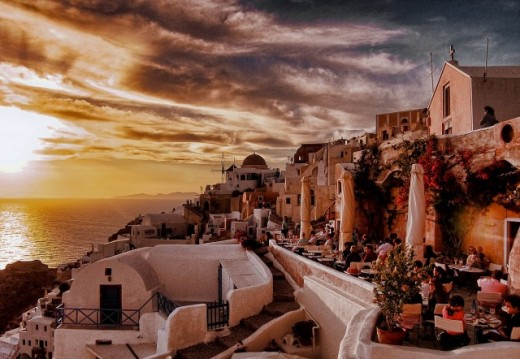
History of Santorini
Santorini was the home of an important civilization around 3600 B.C.
Some archeological discoveries, near Akrotiri and the red beach, are the proof of a Mionan colony, due to the resemblance with the artiacts found in Crete, which relate to this people.
In ancient times, Santorini was called “Stongili”, the word for round in greek.
At the beginning of the Late Bronze Age, Santorini volcano in the center (or Thera) erupted on a scale that has not been matched during the four or five millennia of volcanic eruptions located in densely populated areas of the globe or in their vicinity. The bucket (or crater) created by the eruption of Thera has measured an area of about 83 square km.
Currently area extends approximately 480 m depth below sea level inside the rock wall that surrounds it and that they themselves are up to 300 m above sea level.
Over the past 25 years there has been an especially large number of debates about the nature and consequences of the cataclysmic phenomena.
A large-scale earthquake caused extensive damage to the city of Akrotiri before the eruption buried it.
Exceptional state of preservation of all categories of artifacts buried meters deep, in volcanic ash and debris from the eruption on 1500 BC., Akrotiri has managed to become one of the two or three most important prehistoric sites in the Aegean.
n the Byzantine Era and under the rule of Constantinople, Santorini adopted the Christian faith and appointed its own bishop and organized its Christian church. In 1204 AD, after the Fall of Constantinople, the Venetians took over the island and it was during this time that the island was named Santorini, after Santa Irini. In 1207, Santorini was handed over to the Duke of Naxos and although it was taken by the Greeks for a short while, it remained under Venetian Rule until 1579, when the island came under Ottoman Rule. It had relative autonomy during this period, to the point that Santorini had an elected delegate who represented the Santorinians before the Turkish Authorities. The island finally gained its independence in 1821 and joined the Greek Republic in 1830 with the signing of the London Protocol.
In 1956, another severe volcanic eruption caused much destruction on Santorini, but the island has managed to re-build and to develop into one of the most popular and well-loved vacation spots in the world.
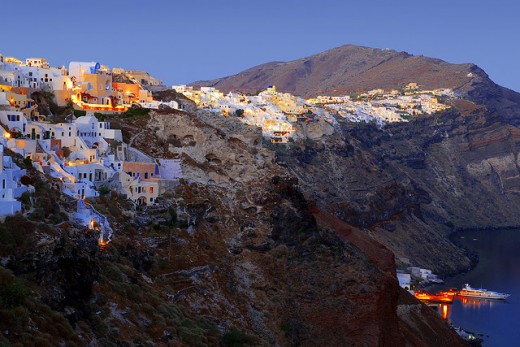
How to get to Santorini
If you want to visit beautiful Santorini then you must know how to reach it first.
The easiest mean of getting here, especially if you come from another country, is by air. You can fly from many airports in Europe by a charter flight, that’s non-stop, and in 2 or 3 hours you’re in Thira Airport.
Or, you can fly either from Athens or Thessaloniki, there are 2 flights per day, and during summer there are charters as well.
Santorini Airport, located near Kamari village and next to Monolithos area, with regular flights from Athens by Olympic Airways and, Aegean Airlines as well as charters from many European towns. Flight duration from Athens to Santorini is about 30 minutes.
From the airport there are buses to Fira, where you can change to buses for other towns. Taxis are also usually waiting at the airport, but competition for them can be keen. Many Santorini hotels offer airport transfers, usually for a fee that’s more than a taxi would charge you.
Also the airport serves as both a military and a civil airport. With its relatively small appron, the airport is only able to serve up to 6 civilian planes at the same time. The tower
You can reach Santorini by boat. Take a ferry from port Piraeus or Rafina, both near Athens.
A classical ferry that departs from Piraeus needs about eight hours to reach the port of Santorini while more modern ferries need about seven hours. Santorini is also conencted to Thessaloniki (the trip takes about 20 hours) and Heraklion, Crete (4 hours by normal ferry).
Santorini is also linked with other Aegean islands, so you can combine your holidays. In particular, it is linked by normal ferry to Anafi (1 hour and a half), Folegandros (2 hours and a half), Ios (about 2 hours), Amorgos (4 hours), Kimolos (7 hours), Kythnos (10 hours), Milos (5 hours), Mykonos (2 hours and a half), Naxos (3 hours), Paros (4 hours), Syros (7 hours), Serifos (9 hours), Sifnos (8 hours), Sikinos ( 2 hours), Skiathos (18 hours) and Skopelos (16 hours).
Flying Dolphins
Apart from normal ferries, there are also many hydrofoil itineraries to connect Santorini with other Aegean islands, such as Heraklion, Crete (the trip takes about 45 minutes), Rhodes (1 hour), Folegandros (1 hour), Ios (40 minutes), Koufonissia (2 hours), Mykonos (30 minutes) and Paros (1 hour and a half).
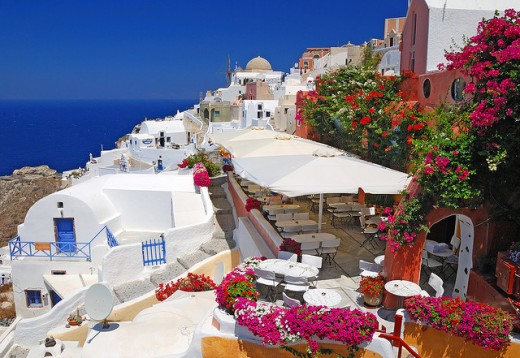
- Santorini Villages
Santorini is a beautiful island of Greece, with traditional villages , blue waters and sky, white houses on top of the hills, small stone-paved streets, happy and friendly locals, nice, cosy cafes, bars and... - Santorini local products
Due to the fertile land here, Santorini is famous for its unique vegetables, such as white eggplant, tomatoes (cherry tomatoes), peas and Fava. Among the delicacies are noted fish, salad and vegetables,... - The lost Atlantis, Santorini
Atlantis - a lost continent, a mysterious world of the ancient times, the home of a great civilization, which vanished into the depths of the sea leaving not much of a tangible proof of its existence. It is an...
Santorini Volcano
Archaeological findings in Santorini cover the entire Historic period. The island is considered by many to be the legendary Atlantis that suddenly vanished. The excavations near the village of Akrotiri revealed a large settlement about 35 centuries old, well-preserved under thick volcanic ash layers, over a much older settlement as it has recently been discovered. The sound & ash of the great eruption -which seems to have destroyed the Minoan civilization of Crete- reached Egypt and even further.
Traces of the Classic era exist in Ancient Thira. A long series of invaders, from Doric tribes to the Saracens left their marks on the local population, which has known many fluctuations in size. The Venetians gave the island its present name when they first anchored at the Riva beach in Thirassia, next to Santa Irini chapel.
About 1550 BC. It is believed that the island Strongyle (rounded), was shattered and its remaining fragments constituted Thera, Therasia and Aspronisi. Tidal waves washed the shores of the surrounding islands and Crete. The eruption is estimated to have been four times more powerful than that of Krakatoa in 1883. Its repercussions within the Aegean area were terrific. The sinking of Strongyle is frequently identified with the submergence of the mythical Atlantis. Earthquakes destroyed everything. Upon the ruins was founded the Late Minoan City of Acrotiri, a new urban society. One or more rooms in each house were decorated with wall-paintings featuring naturalistic landscapes or animals or humans. This city is now coming to light and promises to greatly extend archeological knowledge. The lay-out of the city resembles the present-day villages of Santorini. One can visit the Ancient city of Acrotiri and walk through its streets.
About 1500 BC. At Akrotiri a society existed which can be characterized as urban. It seems that this society was a mixture of Cretans (Minoans) and local Cycladic people.
About 1450 BC. Eruption of the volcano.
Abt 1330 BC. According to Herodotos, Phoenicians came and settled in Kalliste. They stayed there for five generations. This information has been neither verified nor rejected by archaeologists.
About 1115 BC. The island became a Lacedaemonian colony. It was completely isolated from the outside world and entered a long “dark age”. By that time the island was named Thera after Theras.
Abt 825 BC. The Phoenician alphabet was imported to Thera, Milos and Crete and so the Hellenic language acquired its alphabet.
Archaic period (7th and 6th centuries BC). Thera was in close contact with Crete, Paros, Attica, Corinth, Rhodes and Ionia. The relations were rather superficial. The conservative Therian society was not easily influenced. The fertile soil covered the needs of the local people who avoided maritime adventures. As a result the Classical period of ancient Hellas did not leave any particular characteristics in Thera.
Hellinistic period (300-145 BC). The island’s strategic position was especially esteemed by the Ptolemies. Thus, Thera became an important naval base from which the successors of Alexander the Great launched their campaigns for dominion over the Aegean.
197 BC. Eruption of the volcano.
19 AD. Eruption of the volcano.
46 AD. Eruption of the volcano
726 AD. Eruption of the volcano.
1204 AD. The Fourth Crusade created the Latin Empire of the Bosphorus.
1207 AD. The Duchy of Naxos of the Archipelago was founded and assigned to Marco I Sanudo. Thera was ceded as a Barony to Giacomo Barozzi. The administration remained in the hands of five generations of Barozzis until 1296. The Barozzis used to call themselves “Dominatores insularum Santorini et Therasia”.
1296 AD. The Byzantine Likarios liberated Santorini along with the islands of Amorgos, Seriphos, Kea, Ios, Siphnos and Pholegandros.. However the newly-won freedom was very short lived and before the year was out the Barozzis had returned to Santorini.
During the next years the history of the island is the history of the rivalries between local lords and the Duke of Naxos or disputes between the latter and the Turks.
1570 or 1573 AD. Eruption of the volcano.
1579-1821 AD. Turkish occupation
1650 AD. Eruption of the volcano (26th Sept – 6 Dec)
1707 AD. Eruption of the volcano (23rd May – 17th Jan 1708)
1821 AD. Santorini is liberated.
1866-1870 AD Eruption of the volcano.
1870 AD. Mamet and Gorceix carried out a trial excavation in Akrotiri where a late Minoan settlement exists.
1899 AD. Robert Zahn carried out minor excavations at the site of Potamos (Akrotiri)
1925 AD 11th Aug – 1926 AD 21st May. Eruption of the volcano
1928 AD. Eruption of the volcano (23rd Jan – 17th Mar)
1939 AD End Aug – 1941 Beg July. Eruption of the volcano
1950 AD. Eruption of the volcano (10th Jan – 2nd Feb)
1967 AD. Professor Marinatos begun excavations at Akrotiri and uncovers a Late Minoan settlement.
Today An island which can be described as a paradise for tourists and archaeologists.
The volcano never ceased to remind its presence: Its underwater branch in Koloumbos, NE of Oia, brought death to thousands of people & animals with its poisonous gases around 1700 AD. The last eruption occurred without any victims in the 1920s, when New Kammeni was formed. However the earthquake of 1956 caused many casualties & extensive damages, which forced the Greek State to implement a rare example of new group housing blending vernacular and Modern features.
